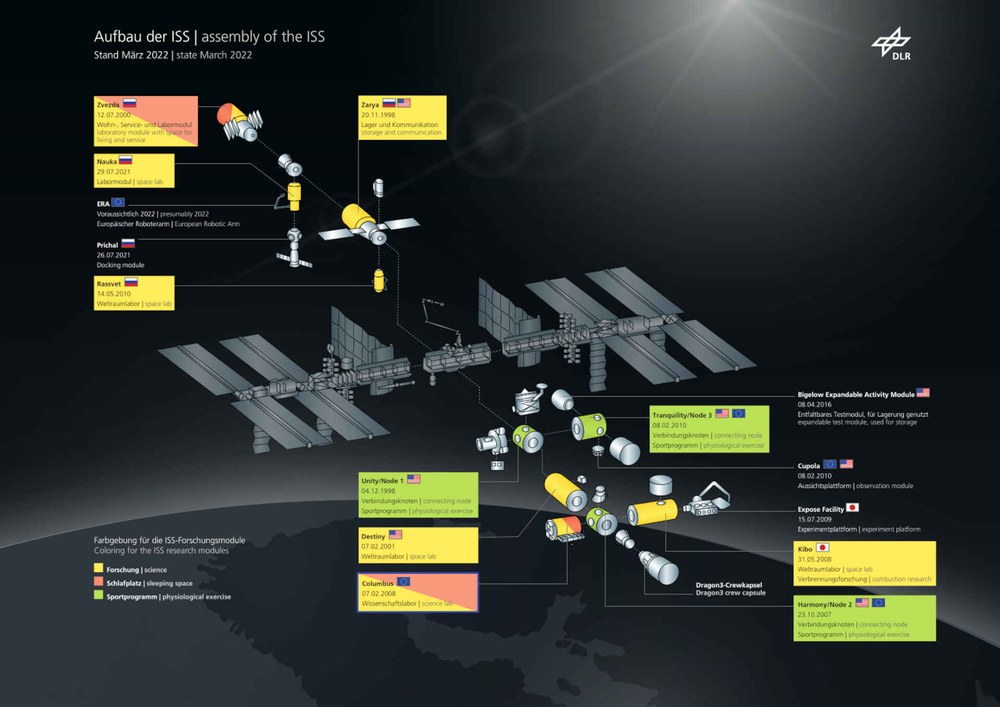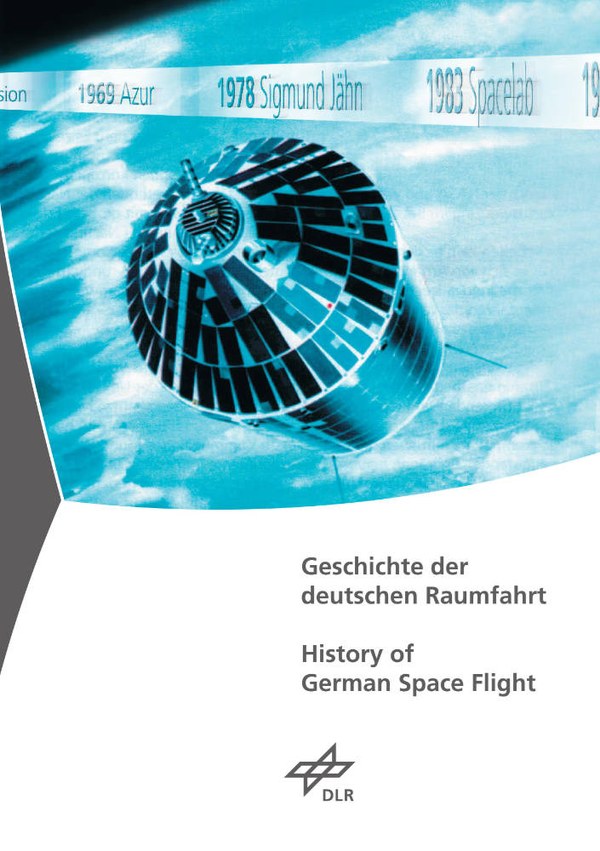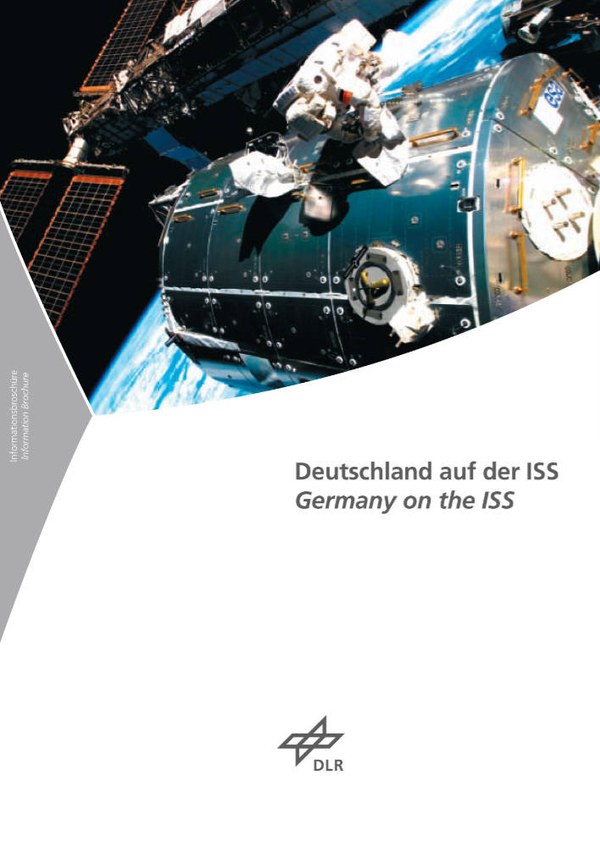Research in space benefiting humanity


The International Space Station ISS is humanity's largest outpost in space – an orbiting laboratory with excellent opportunities to conduct fundamental and applied research. In microgravity, we gain unique insights into fields ranging from astrophysics and materials research to psychology and medicine. Experiments on the ISS also prepare for future astronautical exploratory missions to the Moon or Mars. The ISS also drives innovation for new industries and technologies such as laser communications, robotics and sensor technology.
On the ISS, the major spacefaring nations are jointly developing solutions for the global challenges facing our society, such as healthcare, the environment and climate change, as well as digitalisation, Industry 4.0, energy and the mobility of tomorrow.
Some examples of how research on the space station helps to improve our lives on Earth:
Through research in space, we are increasing our understanding of diseases. Fundamental biomechanical properties of astronauts' skeletal muscles are monitored to study changes due to lack of gravity. The findings will lead to improved rehabilitation and exercise programmes on Earth to combat muscle atrophy and osteoporosis. Stress-induced weakening of the immune system is also being researched as a prerequisite for new preventive and therapeutic treatments. Furthermore, the treatment of infections with antibiotic-resistant germs is being studied in the field of space medicine. Thanks to research on the ISS, an effective antidote has been found in the form of cold plasma.
Environmental and climate conditions can also be studied from the ISS. Scientists use the sensitivity of birds and bats to detect changes in the climate and impending natural disasters. Equipped with small transmitters, these animals transmit data about their migratory behaviour to the ISS. The information obtained helps to draw conclusions about climatic changes on Earth.
Spin-offs from space that lead to applications on Earth are also made possible using digital assistance systems for the ISS crew, this includes an assistant equipped with artificial intelligence that supports astronauts in their daily work. This helps to ensure that the valuable time on the station can be used even more efficiently. Another goal is to derive insights from this human-machine interaction for robotic production within the framework of Industry 4.0, for medicine and care as well as for the education sector.
The behaviour of granulates in microgravity is being studied to improve industrial processes and facilities on Earth. This has a major economic impact because granulates such as sand or grain are the most processed goods after liquids. Experiments with concrete are also conducted on the ISS. A reduction in CO2 emissions is necessary at several stages of the process chain in order to produce this building material on Earth in a more climate-neutral way in the future. This requires a better understanding of curing, the complex mechanisms of which are being investigated without disruptive gravitational influences and with different sample compositions. The results can contribute to a more effective use of concrete.
Melting experiments in the Electromagnetic Levitator (EML) on the ISS are used to achieve progress in industrial casting and production processes for metal and alloy melts, for example for new types of aircraft turbine blades and engine casings. This leads to lighter aircraft and cars with lower fuel and energy consumptions – for the clean mobility of tomorrow.
The behaviour of plasma is also being studied on the space station to expand our understanding of this state of matter. This should result in technological progress in the production of semiconductors, modern drives, valves and shock absorbers.
Long-term experiments on ultracold atoms, which are only possible in this form on the ISS, will also advance the development of state-of-the-art integrated circuit technology, miniaturised laser modules and high-precision clocks and sensors. Among other benefits, these developments could help make satellite navigation even more precise in future.
Increasingly, industry-motivated research and commercial experiments are entering the field, especially in the US. Europe has provided the Bartolomeo external platform, built by Airbus, for this purpose in 2020. Low-Earth orbit is thus slowly becoming part of terrestrial economy.
For Germany as an export nation, high-tech country and research location, research on the ISS is an investment in the future and at the same time an inspiration for the next generation. Astronautical missions with German participation on behalf of the European Space Agency (ESA) strengthen Germany as a location for research and innovation and make the Federal Republic of Germany one of the most active users and beneficiaries of the research facilities on board the ISS, so that 'science fiction' can become a reality.
Over 20 years of research in free fall
In December 1998, the assembly of the International Space Station in Earth orbit began with the docking of the Russian cargo module 'Zarya' and the US connecting node 'Unity'. The docking manoeuvre was the visible beginning of humanity's largest cooperation project in space. For the first time, a permanent international cooperation between Russia, the USA, Europe, Canada and Japan was established in space.
Since November 2000, astronauts have been permanently on board the ISS. In February 2001, the first research unit docked with the US Destiny module. This allowed research to begin at an altitude of around 400 kilometres, at a speed of around 28,000 kilometres per hour relative to Earth and in a state of permanent microgravity.
Over the years, the ISS has grown into a widely diversified research station. 43 flights of Russian launch vehicles and US space shuttles were necessary to transport modules and large components into Earth orbit. The first ISS module, the 12.6-metre-long Zarya module, weighed some 20 tonnes. In its current form the ISS has a total mass of around 420 tonnes. Today, the space station consists of six research laboratories, two living units, an observation dome (the Cupola), several storage spaces, connecting nodes, docking facilities and robotic arms. Its residents live and work in a space of around 1000 cubic metres – about as much room as on a Boeing 747.

Germany on the ISS
Researchers from Germany have been involved in the scientific use of the space station since 2001. The first experiment on the ISS was the German-Russian PKE experiment investigating the growth of plasma crystals in microgravity. With over 100 scientific publications, it is one of the most successful research projects on the ISS. To date, well over 3000 experiments from 108 countries have been conducted on the ISS. Around 250 people from 19 countries around the world have flown to the ISS so far. Around 500 experiments originate from the ESA utilisation programmes. German researchers were involved in around 200 of these European experiments.
Four German astronauts have lived and worked on the ISS so far – Thomas Reiter, Hans Schlegel, Alexander Gerst and Matthias Maurer. As the first European long-duration astronaut, Thomas Reiter spent six months on the station in 2006 as part of the 'Astrolab' mission, carrying out more than 30 research experiments in addition to maintenance and service tasks.
In 2008, Hans Schlegel was responsible for the successful assembly of the European Columbus module on the ISS. The space laboratory built in Bremen is still the scientific centrepiece for European research in space. The third German crew member on the ISS is Alexander Gerst. He worked as a flight engineer on the space station for six months during the 'Blue Dot' mission in 2014. He had his second long-duration stay in 2018 with his 'Horizons' mission. He was the first German and second European to take command of the ISS for about three months.
In November 2021, Matthias Maurer was the first German astronaut to fly to the ISS on board a SpaceX capsule of the NASA Commercial Crew Program. He has chosen the name 'Cosmic Kiss' for his mission – a declaration of love for space, the Earth and research as well as a symbol of the partnership-based exploration of space that has been established among the participating nations since the ISS has been in operational use.
The role of DLR
In connection with the expansion, operation and use of the International Space Station, the German Aerospace Center is involved in numerous ways. The German Space Agency at DLR coordinates the German contributions to ESA's ISS programmes. It is also responsible for implementing the national utilisation programme.
As a research centre, DLR is involved in numerous experiments on the space station. The scientists are supported by the DLR Microgravity User Support Center (MUSC) in the preparation, implementation and evaluation of the German and European space experiments. The European Astronaut Centre (EAC) is responsible for training the astronauts and the operating team of the Columbus laboratory, in cooperation with DLR's Space Operations and Astronaut Training Department. The Columbus Control Centre at DLR in Oberpfaffenhofen manages the operation of the ISS module in close coordination with the ISS crew and NASA's control centres in Houston and Huntsville.




